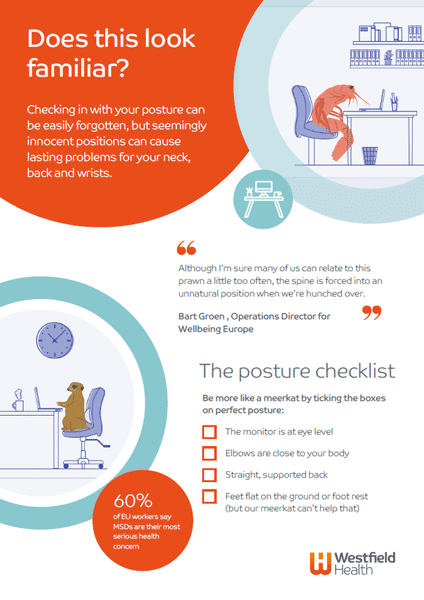One in six people in the UK suffer from back pain, and while the effects of bad desk posture are probably etched in officer workers’ minds, it can be difficult to fix your posture after years of extended sitting.
Posture is unlikely to feel like our top priority when we’re focused on work or in an important meeting, but seemingly innocent positions could cause long-lasting problems for your back and neck.
Long-term, the impact of bad posture can be even larger. Bart Groen, Operations Director for Wellbeing Europe, says:
“Balancing work and indulging in our favourite TV series can result in extended periods of sitting, negatively impacting our backs and overall wellbeing. Prolonged sitting can increase the likelihood of developing conditions like type 2 diabetes, heart disease, and cancer.”
While our workstations at the office may be suitable for our needs, many people still struggle to set up their desk in a way that supports their posture. And when working from home using our own equipment, this can be even more difficult.
We take a look at some common posture mistakes and how to fix them, with the help of our friends from the animal kingdom. Which ones can you identify with?
The slumped sloth
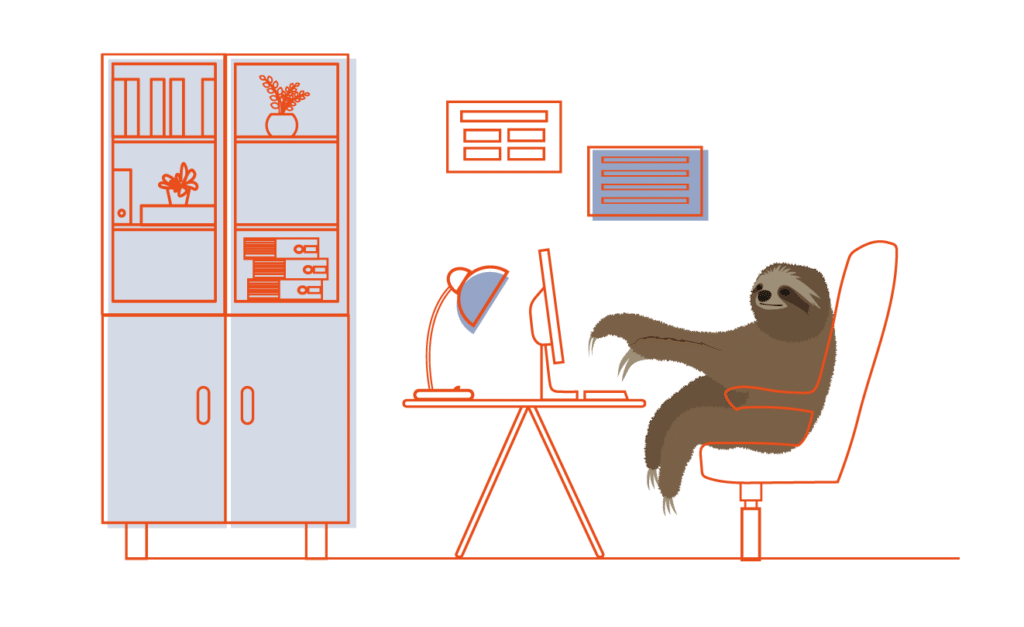
About this posture
It looks comfortable, but this position can restrict your nerves and muscles. Significant slouching could also lead to increased back pain and potential joint degradation.
The sloth has a good desk setup with a separate keyboard, but his laid-back posture and unsupportive chair means he’s struggling to reach it.
How to fix it
- Try an ergonomic chair to accommodate your working style.
- Strengthen your muscles to better support an upright posture.
- Be intentional about sitting up straight during the work day.
The hunched gorilla
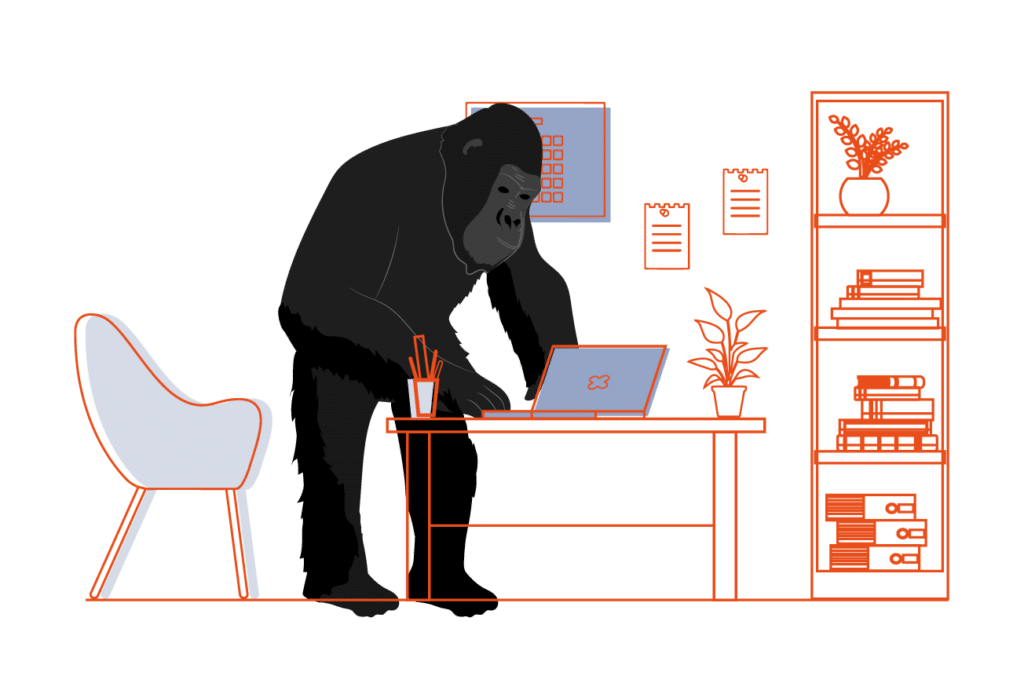
About this posture
It’s easy to relate to this gorilla when we’re crunched for time and can’t seem to take our eyes off the laptop. However, this position puts us at risk of chronic back pain as we’re not at eye-level with the screen.
Bart adds: “The spine has a natural curve in the small of the back when we are standing. When we sit down and lean forward, this curve reverses, doubling the usual pressure on the spine’s lower portion, which can lead to back pain.”
How to fix it
- Try a standing desk if you find you’re in this position a lot.
- Keep a neutral spine — remember your neck is part of your spine too.
- Practice stretching at your desk to help relieve neck and back pain.
The curved prawn
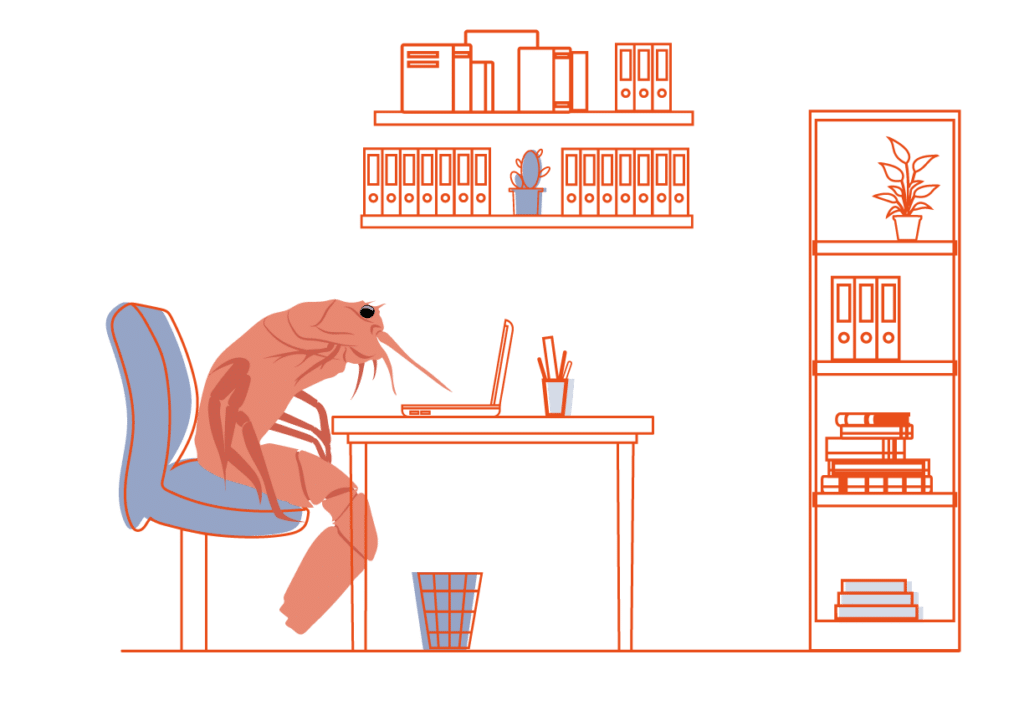
About this posture
Adopting a hunched-over desk posture, similar to this prawn, could have significant negative effects on our health. Prolonged periods of poor posture can lead to various musculoskeletal issues and discomfort.
Bart Groen shares: “Although I’m sure many of us can relate to this prawn, in this position the spine is forced into an unnatural position. If you sit like this, it’s important to fix your posture as this bent position places excessive strain on the neck, shoulders and lower back, which can lead to chronic pain.
How to fix it
- Make sure your desk is set up ergonomically to support good posture.
- Build core strength to help keep the torso upright.
- Take regular breaks to stretch and move.
The folded flamingo
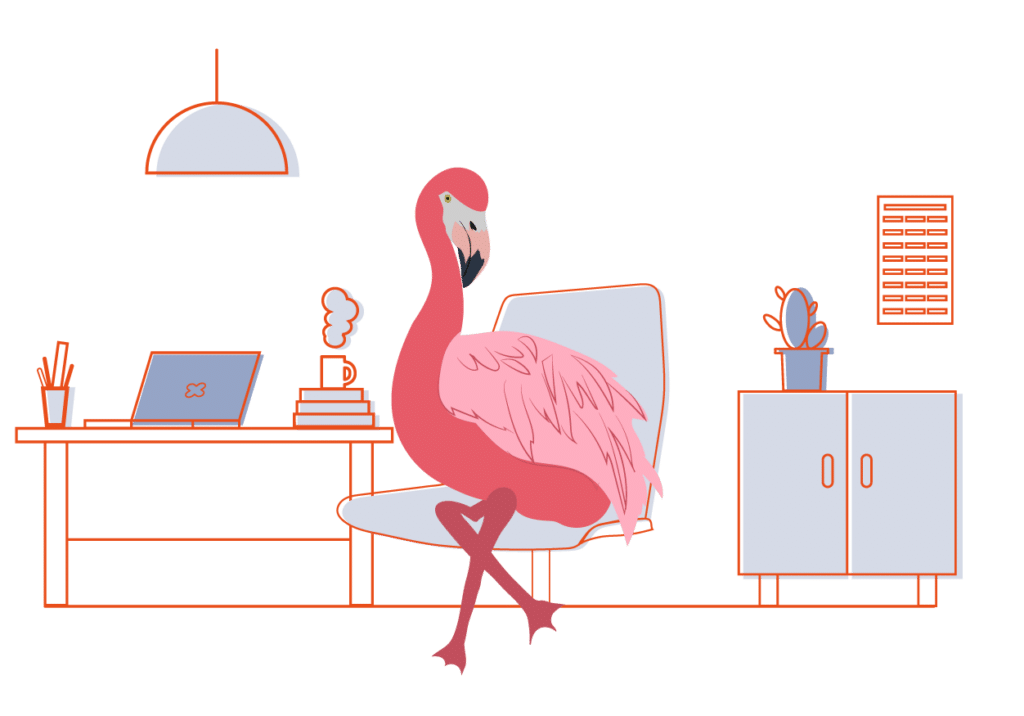
About this posture
Are you a left or right crosser? 62% of people cross their right leg, while 26% cross their left leg. This seems innocent, but crossing your legs can cause lower back pain. While it’s good to switch between different positions, be careful not to make leg-crossing a regular habit.
In extreme cases, it may also misalign your pelvis. It’s also important to ensure your monitor is at eye level to avoid eye strain and neck pain.
How to fix it
- Uncross your legs — use a foot rest if they can’t comfortably reach the floor.
- Make sure your chair is supporting your posture with good lumbar support.
- Position your screen at eye level.
The towering T-rex
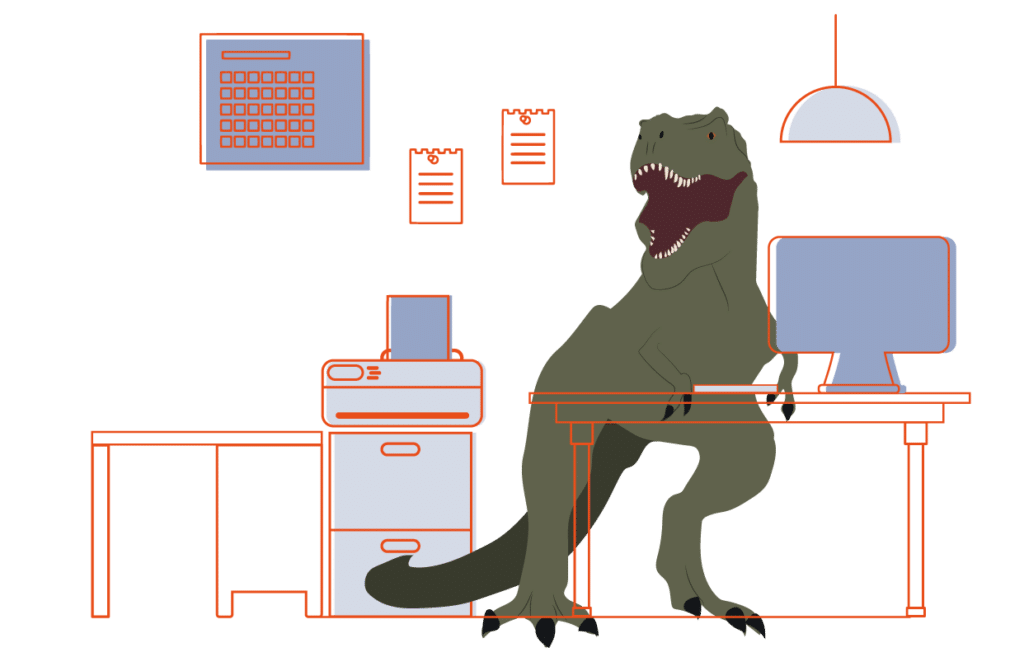
About this posture
While visually intriguing, the T-rex’s posture at its desk is rather impractical. With your eye line above the computer, this upright stance will strain the neck and upper back, leading to potential musculoskeletal issues over time. A standing desk would probably suit this T-rex better.
How to fix it
- Try a standing desk to fix your posture if you prefer not to sit.
- Position your keyboard and mouse in easy reach.
- Try a wrist support cushion.
The upright meerkat
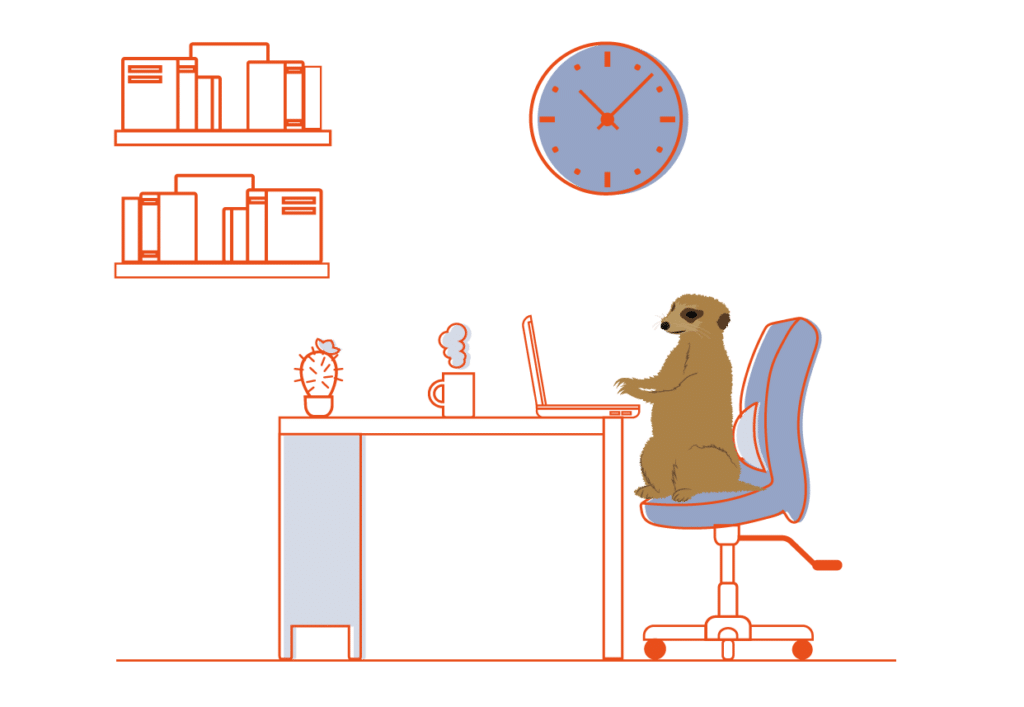
About this posture
The monitor is at eye level, and his elbows are close to his body. With good lumbar support and a straight back, he’s almost mastered the art of desk posture. His feet aren’t on the ground…but he can’t help that.
How to fix it
- Your feet should be flat on the floor — use a footrest if you can’t reach the ground.
- Use a separate keyboard and mouse.
- Build exercise into your working day to avoid prolonged sitting.
Free posters for your workplace
Our free PDF poster can be printed out to spread awareness of good posture in your workplace and help your colleagues to ‘be more meerkat’.
For more information about musculoskeletal health and how to fix your posture, check out our dedicated MSK web page with free tips and resources for you and your team.
